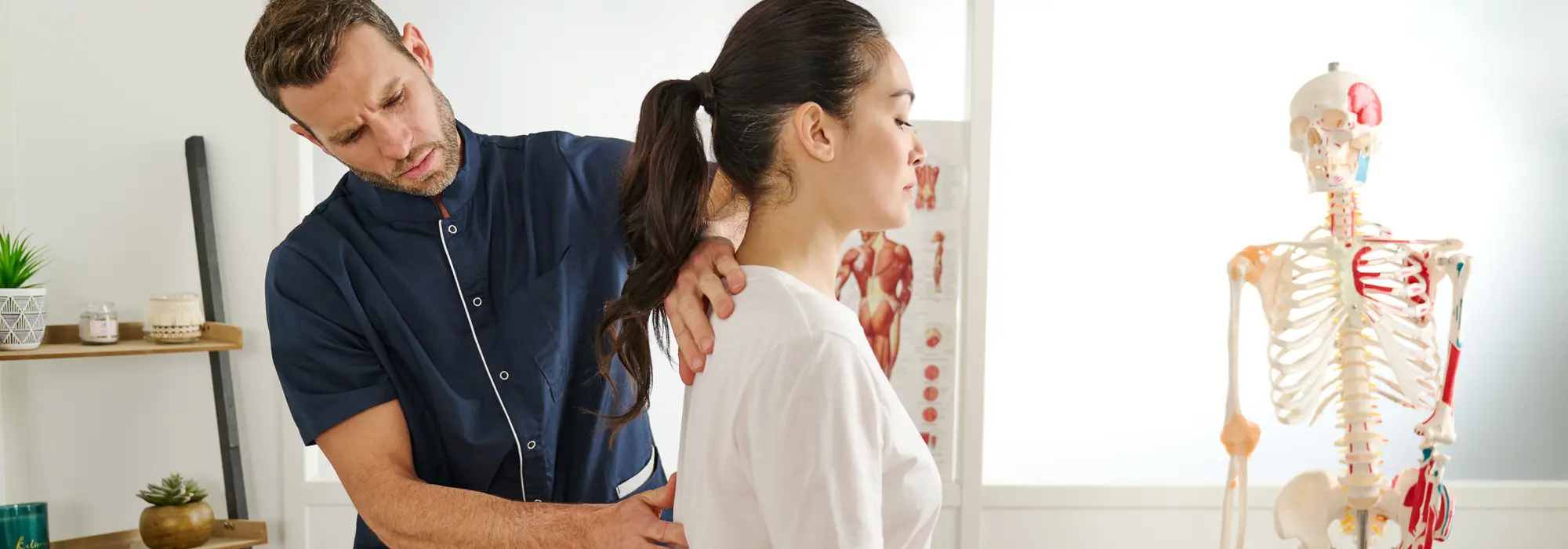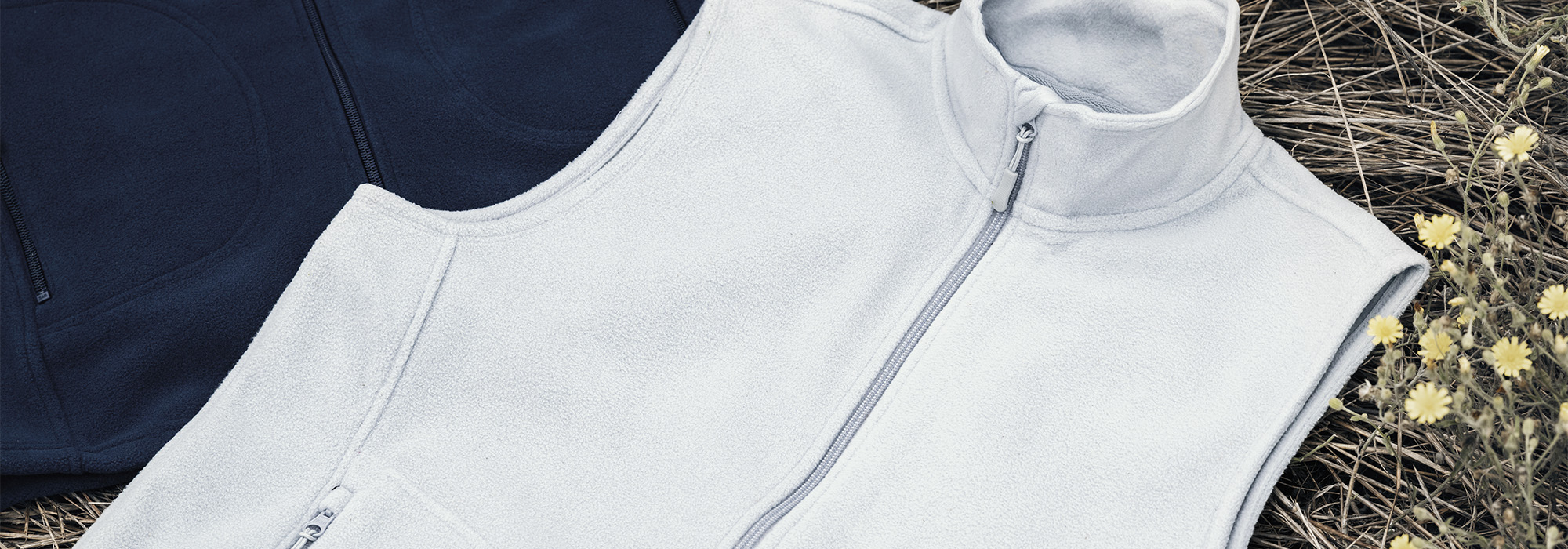As you know, some industries have strict professional dress codes. This is the case for medical, health and personal services, and well-being professions.
Hygiene is a priority for these industries. Dress plays a crucial role in protecting not only the wearer, but also patients and customers.
But there’s no need to neglect comfort! Health professionals, for example, are constantly on the move, often on their feet, and may have to work long hours.
Their clothes must therefore combine practicality and ergonomics, while being hard-wearing because they will often be washed at high temperatures to effectively eliminate microbes and bacteria.
For all these reasons, choosing customisable clothing and accessories that are properly suitable for the Health, Hygiene and Beauty professions means taking a number of different criteria into consideration.
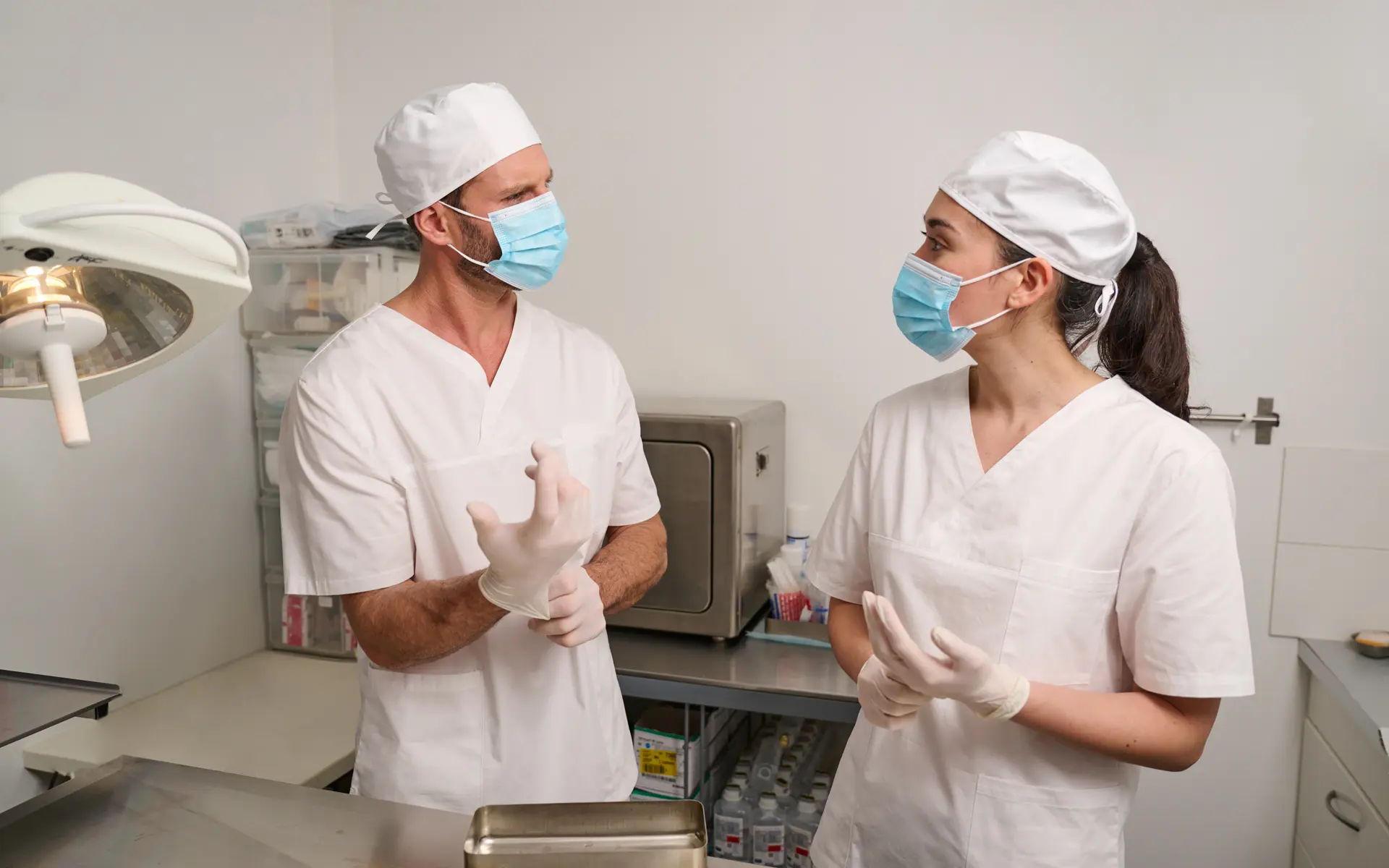
And that’s exactly what we’re going to explore in this article: requirements for the care and health sectors, expectations of professionals in these sectors, and also the little details that can contribute to their everyday comfort.
Of course, all this will be enhanced by concrete examples and references to guide you and your customers in choosing healthcare professional clothing.
From the medical and paramedical sector to the world of well-being, pharmacies, veterinary clinics and top-of-the-range care centres, here are a few ideas for providing these professionals with outfits that combine functionality, comfort, resistance and compliance with current standards. Happy reading!
Essential criteria for professional medical and paramedical clothing
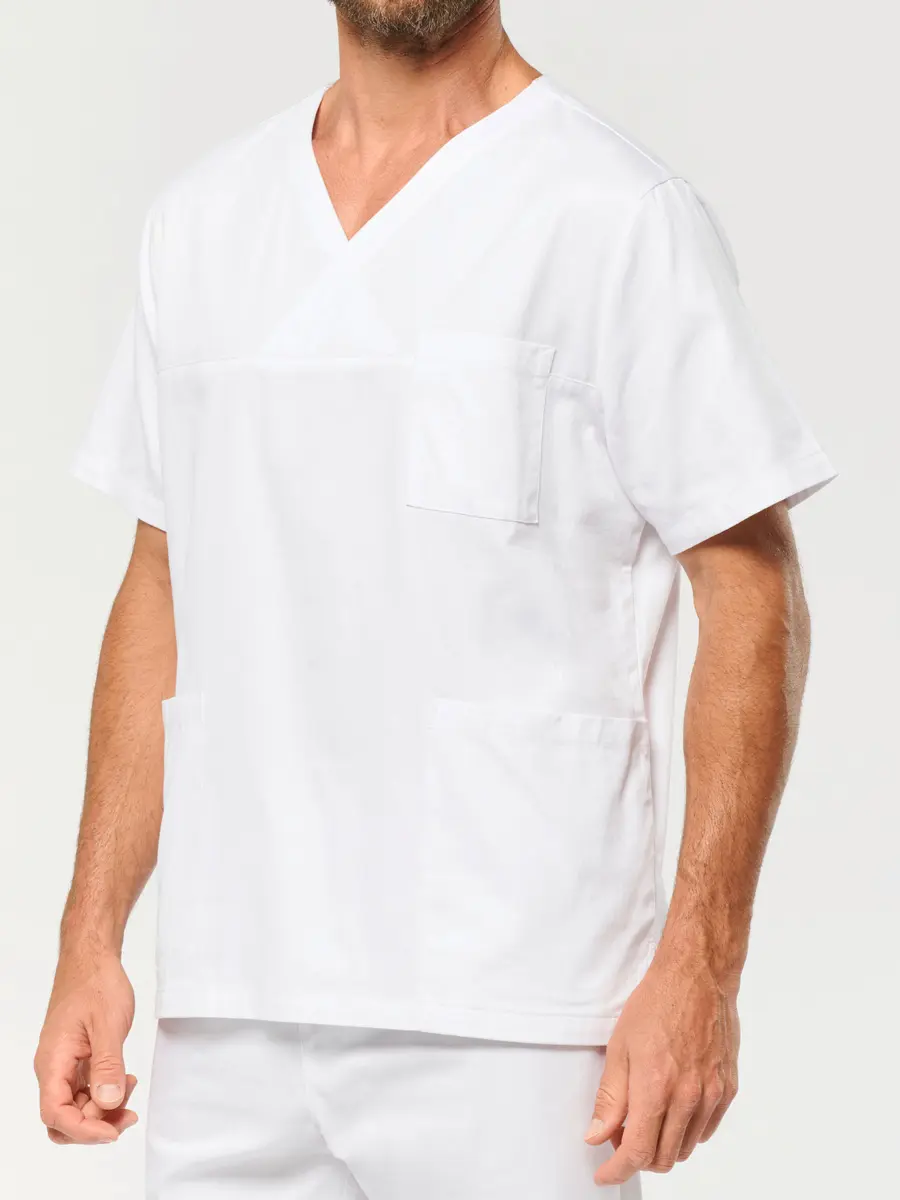
WK504
Unisex short sleeve cotton tunic
Hygiene and maintenance
The medical environment can see a concentration of a large number of viruses and microbes. This is why we strongly recommend choosing fabrics that breathe and repel dust mites and bacteria.
Short sleeves are often preferable, as they won’t get in the way of repeated hand washing, for nurses or care assistants, for example.
Bear in mind that the garments worn by health professionals frequently get stained (blood, chemicals, etc.). Which is why it’s essential that their uniforms can be washed at high temperatures (at least 60°), in line with industry requirements.
The ISO 15797 standard, for example, certifies that the fibres will withstand at least 20 industrial washes, sometimes up to 85°C. This standard is not compulsory, but it can be an additional argument to put to your customers when presenting your selection of personal care textiles.
Comfort and functionality
Medical professionals work long hours. During their shift, they will have to walk a lot, even run, handle medical instruments or carry and move patients.
In their hectic daily routine, they need comfortable, ergonomic, well-designed clothing that doesn’t restrict their movements.
You’ll also need to think about the little details that willmake their job easier: practical pockets, easy-to-close fastenings, a pen compartment, a hanging loop to hang their things in the cloakroom, a name tag so they can find their smock easily, etc.
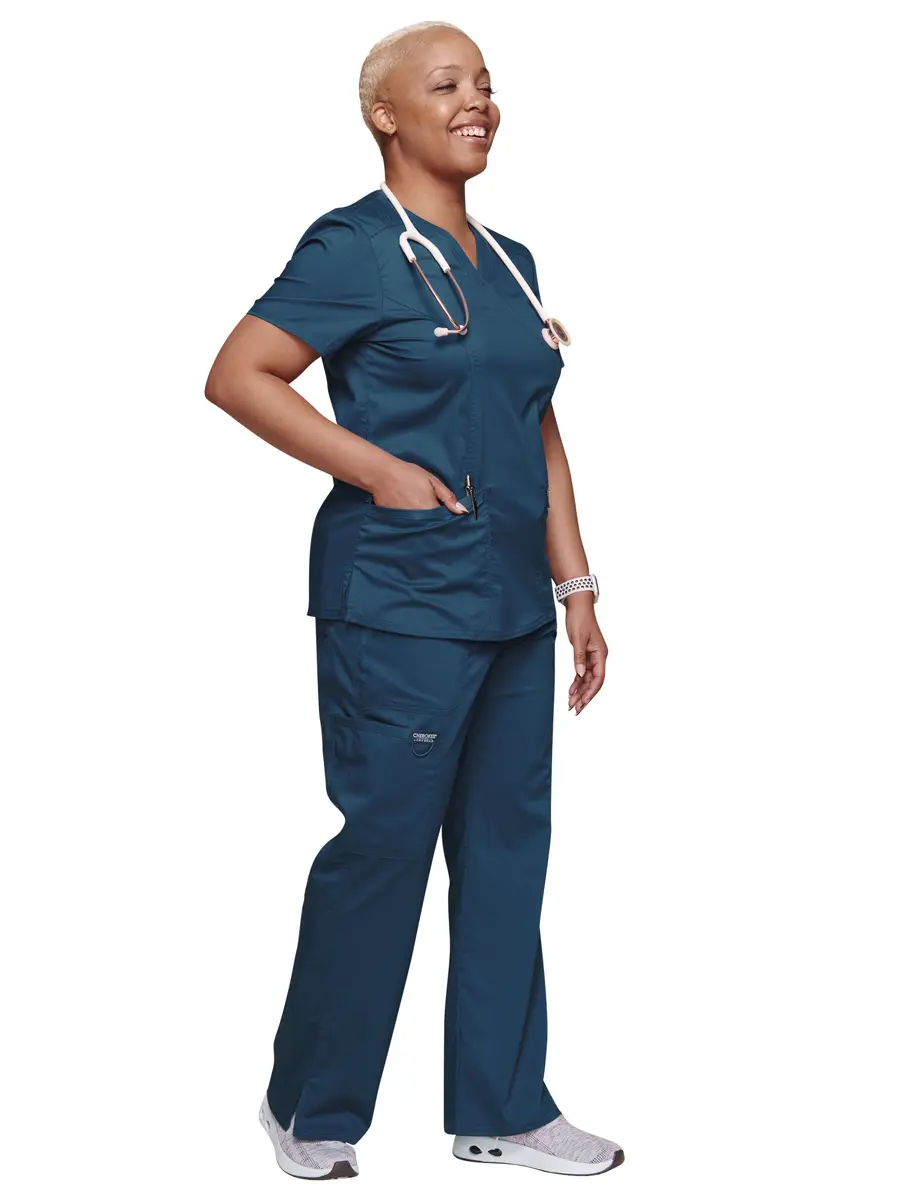
CHWWE610
Ladies' wrap top
Material
There are several material and fibre options used in the design of professional textiles suitable for the health and medical environment. Here are some common examples:
- cotton, a silky, comfortable plant-based material that is 100% natural. Its hypoallergenic properties make it an ideal choice for jobs where hygiene plays a key role. It can be ironed and washed at very high temperatures.
- Polycotton, a blend of cotton and polyester fibres, combines the advantages of both materials: comfort, strength, easy care, etc. On white fabrics, this mix of fibres helps keep the fabric bright and it creases less than 100% cotton.
- polyester combined with viscose and/or elastane to create breathable, stretchy, elastic fabrics that are hard-wearing, ultra-comfortable and quick-drying.
Whatever the case, the clothing worn by medical professionals must be tear-resistant (thanks to reinforced seams, for example), breathable, airy and even stretchy.
Colour
Care and medical professions are associated with colours and that’s no coincidence! Numerous studies have shown that these colours help patients to feel confident, relaxed and calm, as well as enabling them to clearly identify care staff.

The most common:
-
white, the colour of purity, cleanliness and hygiene. It is THE symbolic colour of the medical world, found on the outfits of nurses, pharmacists, nursing auxiliaries, osteopaths, laboratory technicians, etc.
-
blue, which can be light or dark, evokes tranquillity. It also reflects less of the bright light in operating theatres, so will be more popular with surgeons, for example.
-
green, which inspires serenity and relaxation, is often found in hospitals, operating theatres and emergency rooms. Like blue, it is less damaging to the eyes in the presence of strong white light.
In addition to these symbolic colours, there are other shades for medical uniforms.
For example, childcare assistants and midwivesworking in maternity units often wear pink.
And in paediatric wards, a bit of imagination is welcome for carers who are in contact with children.
Another essential accessory in a medical environment is the cap. It provides protection and hygiene for carers and patients.
Although for a long time these were mainly disposable, washable fabric caps are increasingly being adopted by healthcare professionals. For example, the WKP101 model from WK. Designed To Work is specially designed to withstand industrial washing, making it the perfect choice for medical staff.
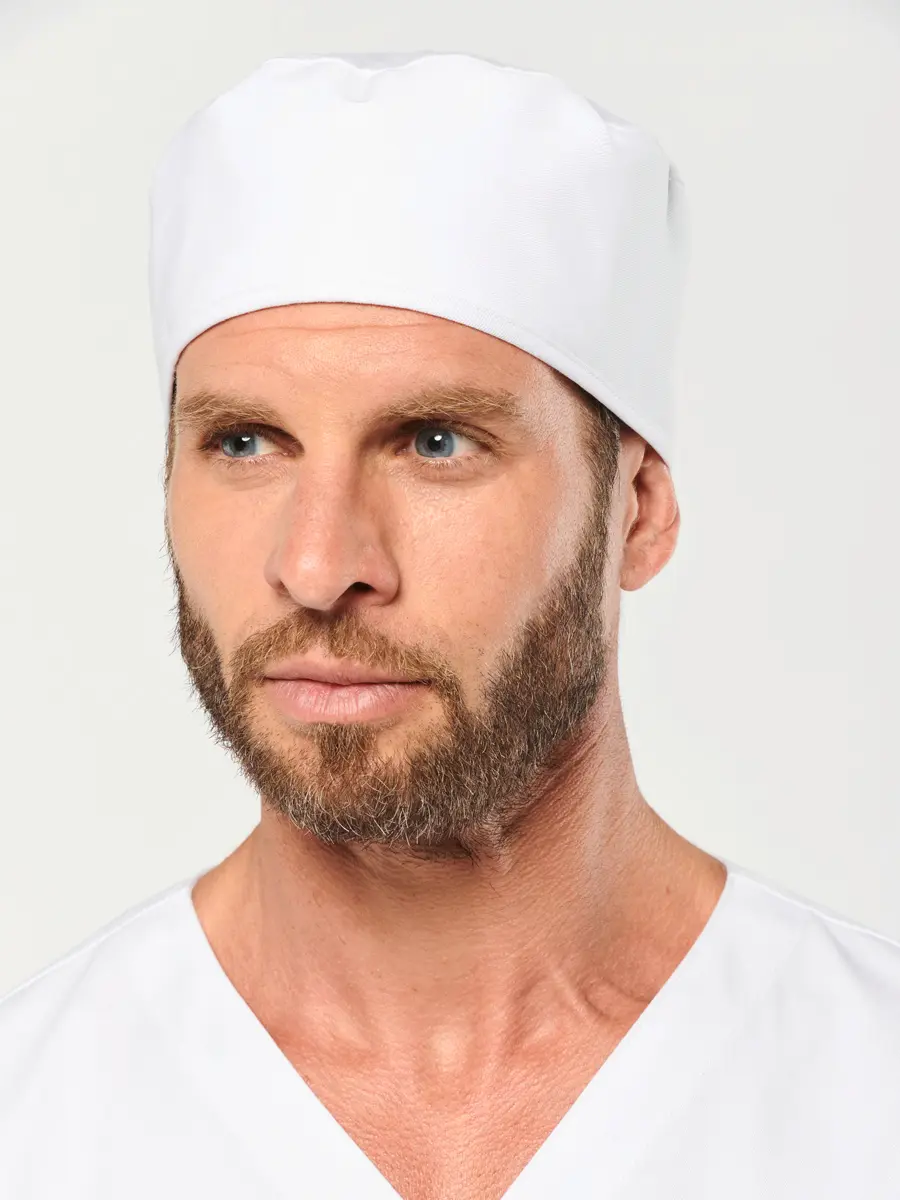
WKP101
Unisex bandana hat
Style and image
As well as colour, the type of clothing also helps to make carers recognisable in the eyes of patients. A smock and trousers for nurses, a blue or green outfit complemented by a loose-fitting white smock for doctors …In all cases, one imperative remains: their appearance must be neat and professional to reassure and inspire confidence in patients.
Note that other professions sometimes wear clothing reminiscent of the medical sector, for image reasons. This is true of some of those involved in the skincare, well-being and beauty sectors. A top-of-the-range institute, spa treatment centre, dermo-cosmetics boutique… As well as protecting against dirt, wearing a smock conveys a professional and serious image, reassuring customers of the expertise provided. It’s a convincing marketing argument that’s being used more and more!
Essential professional clothing for the Health, Beauty & Hygiene sector
To create medical workwearor professional outfits for the care and well-being sectors, here are a few of TopTex’s leading styles:
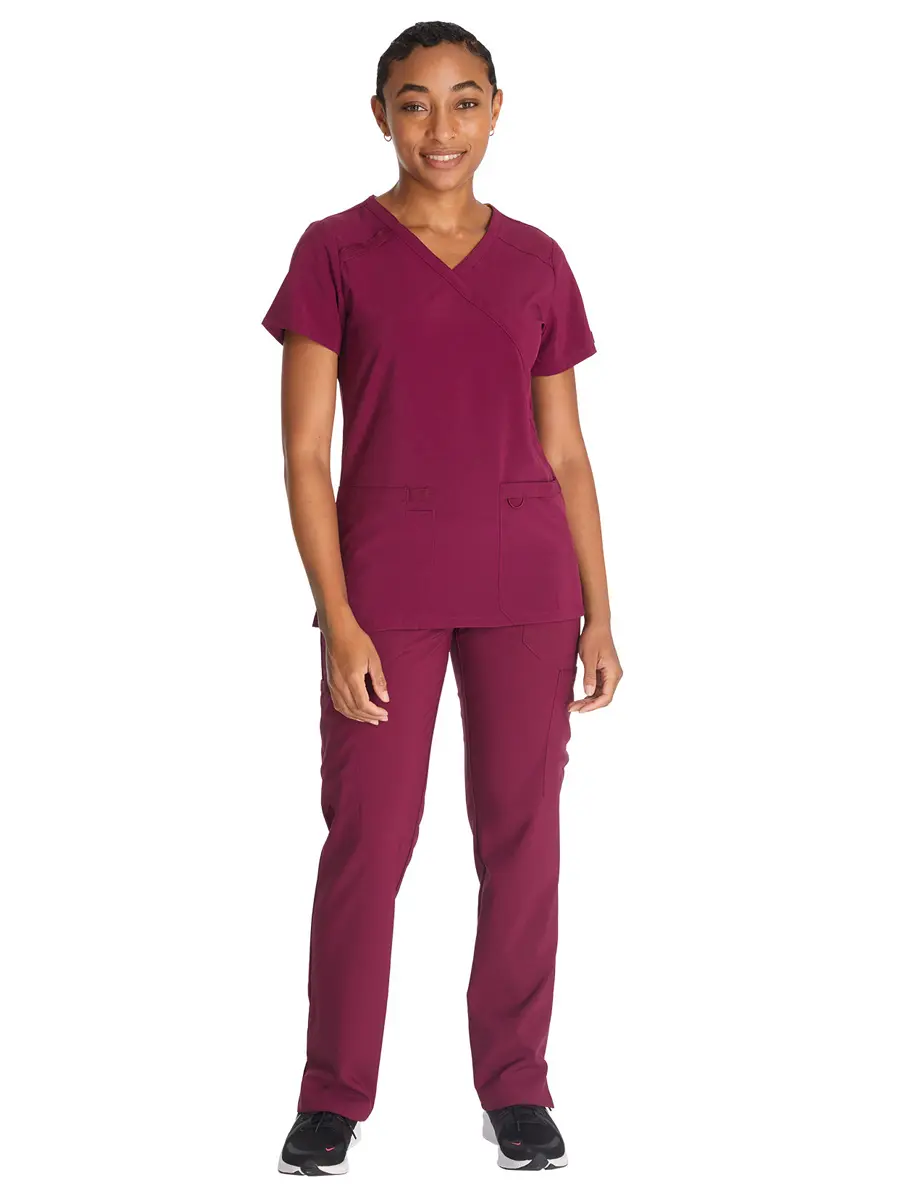
DKE625
Ladies’ wrap top
DKE010
Ladies’ mid-rise drawstring trousers
For midwives or care assistants, for example, it may be worth opting for polyester and elastane outfits. The result is a stretchy fabricthat’s comfortable to wear.
Bonus: on the Dickies Medical DKE625 model, side vents reduce the feeling of heat for professionals who have to go back and forth a lot down the corridors of maternity wards or nursing homes.
For professionals in beauty salons, top-of-the-range treatment centres or even paramedical professions (dieticians, chiropodists, medical secretaries, etc.), consider the Onnabrand, for example .
Modern cuts for men and ladies, elasticated fabricsincorporating 33% recycled polyester, all available in six colourways.
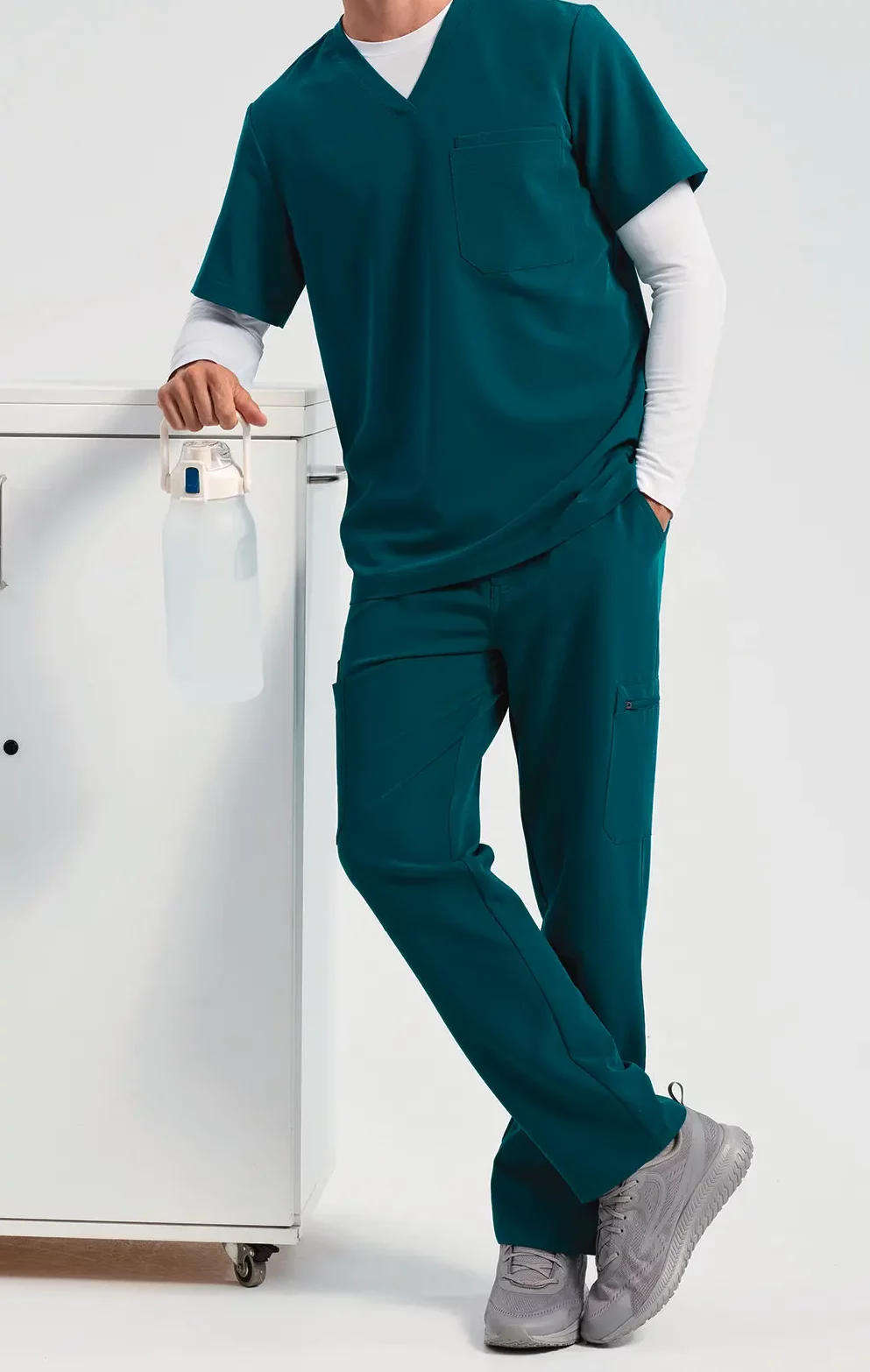
NN200
Men's short-sleeve stretch tunic
NN500
Men's stretch cargo trousers
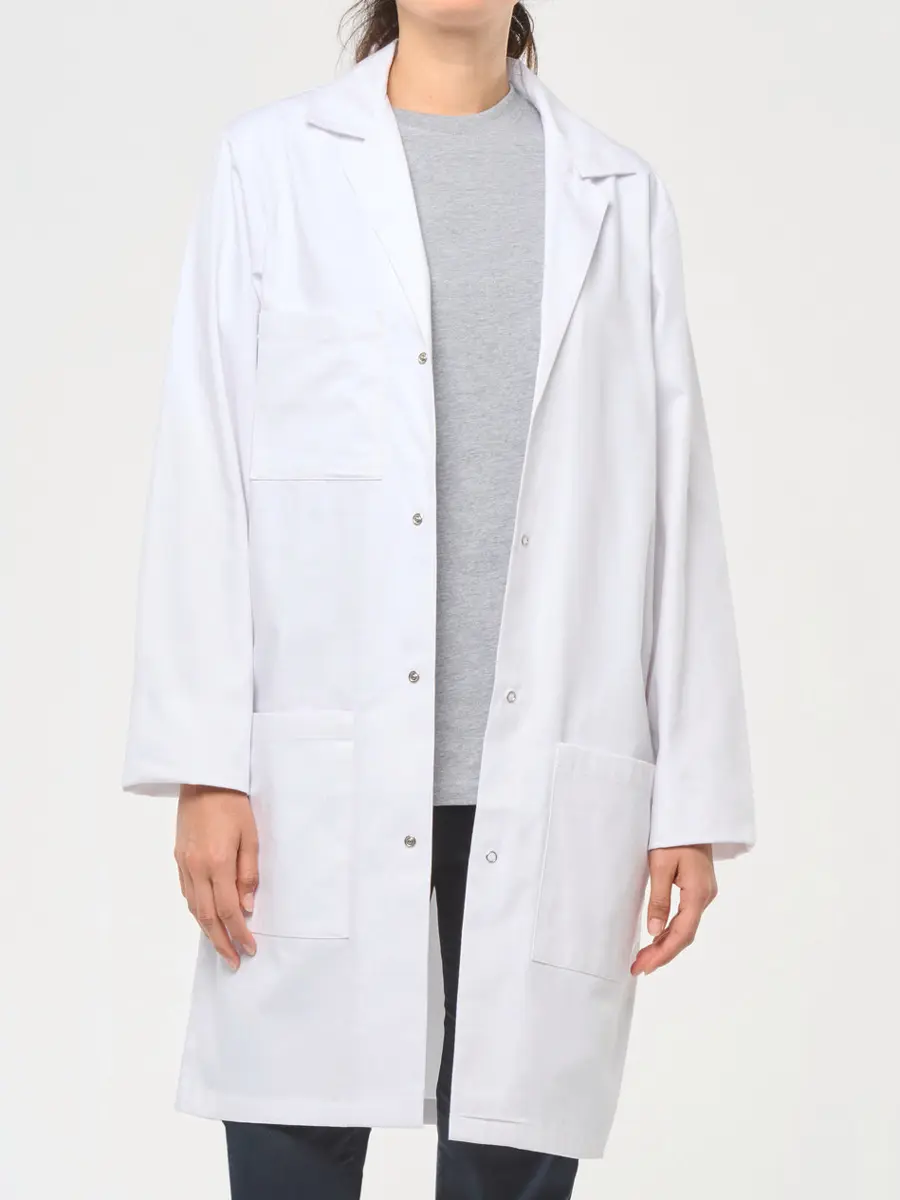
WK828
Unisex work smock
This selection wouldn’t be complete without the essential white medical smock! WK. Designed To Work offers one in 100% cotton, thick and hardwearing, and above all washable at 60°C. The pros? It’s OEKO-TEX® certified, so it’s designed without harmful substances.
A must-have for pharmacists, laboratory technicians and self-employed nurses, who can easily slip it on over their normal clothes.
Kariban also offers polo shirts for men and ladies, for example for beauticians and hairdressers, who have more freedom to choose their outfits, washable at 60°.
Available in over 20 colourways, they’re sure to please your customers looking for casual, comfortable business wear that can be washed at high temperatures.
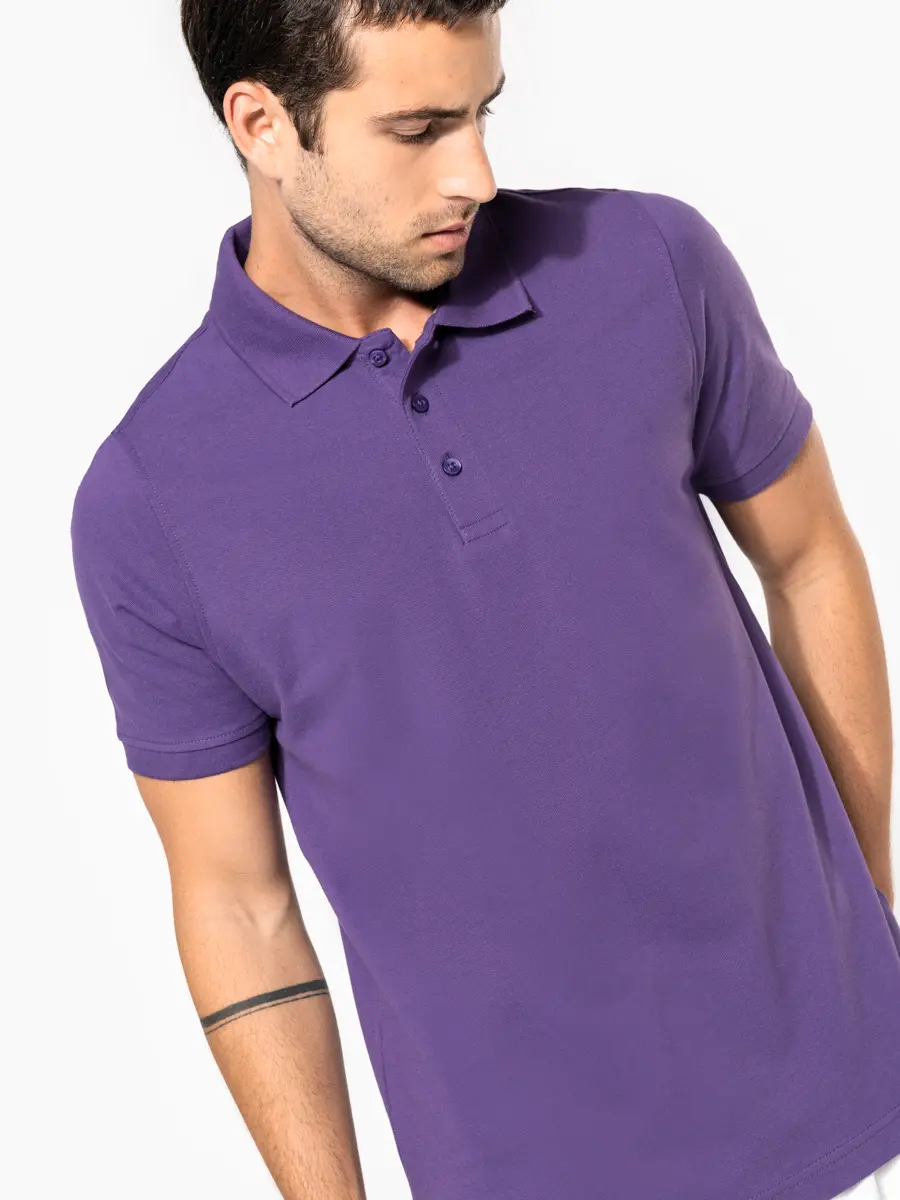
K241
Men's short sleeve piqué polo shirt

WK506
Ladies’ polycotton smock with press studs
Many healthcare professions need comfortable , flexibleclothing . To ensure their movements are not hindered by restrictive clothing, WK. Designed To Work has come up with some snap-fastening smocks in polycotton that can be washed at 75°C. They’ve got it all: strength, practicality and good looks!
Customise the outfits of health, hygiene and beauty professionals
Although the colours and components of medical outfits are subject to certain codes, it is still possible to personalise them a little!
Here are some ideas to inspire you:
- Embroider initials on a doctor or vet’s smock
- Affix the logo like a crest on the outfits of the teams at a private maternity hospital
- Use sublimation to add a fun design to the smock of a psychomotrician or paediatrician
- Write nurses’ first names on their tunic to create a closer relationship with patients
- Emblazon students’ smocks with their medical school’s logo
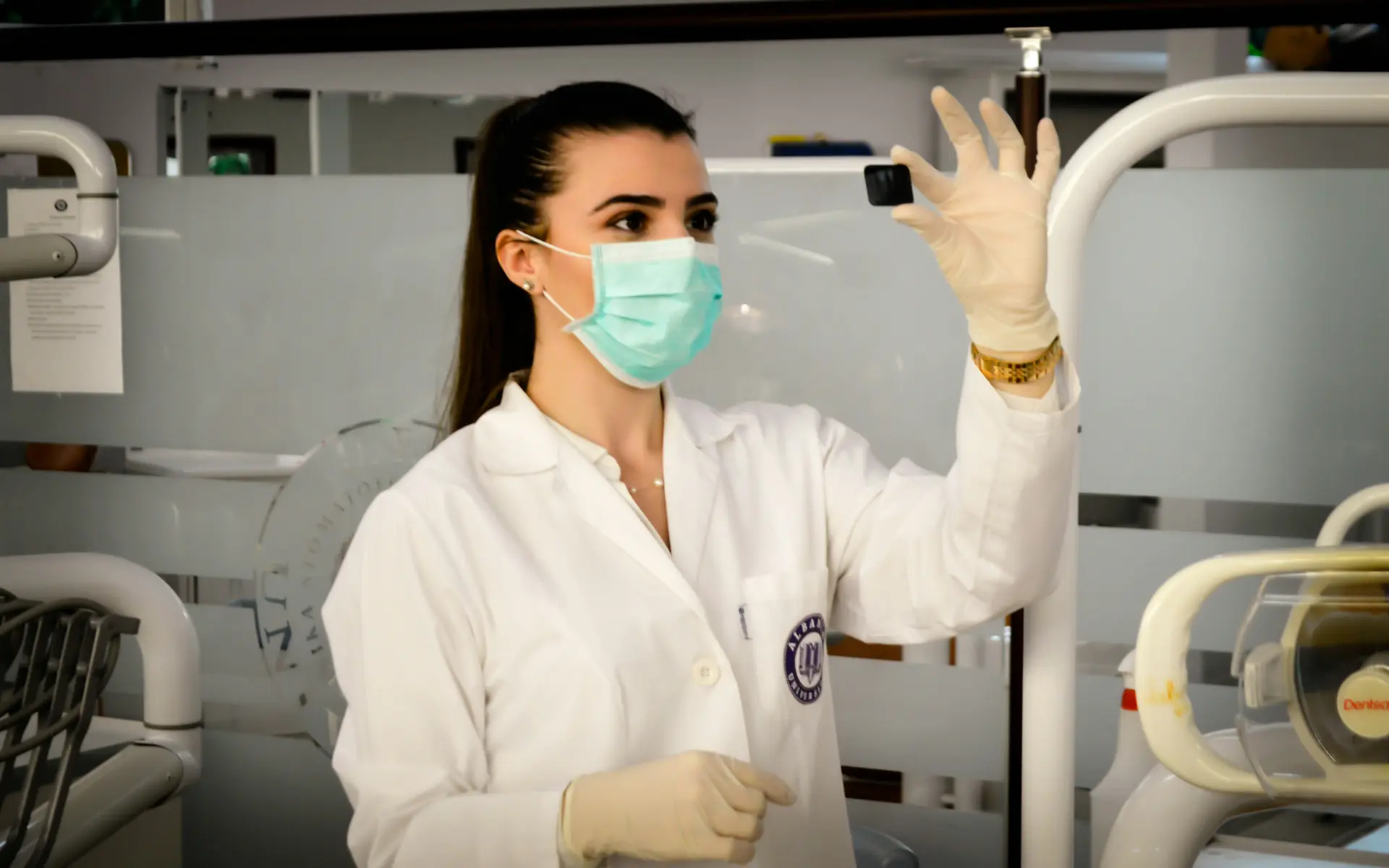
These small, discreet touches will be appreciated by the person wearing the outfit, reinforcing the feeling of belonging to an establishment or a team.
What’s more, customising medical clothing is also very important for patients!
Reading the first name of the carer looking after them, identifying the logo of a clinic or recognising the emblematic caduceus are all reassuring details, especially in a medical context.
TopTex tip
For outfits that will be put to the test (and frequently washed at high temperatures), opt for embroidery. It will resist washing and ironing for longer.
You now have the keys to preparing a selection of customisable textiles and accessories for the medical and paramedical sectors, and more generally for the world of care and well-being.
Do you need even more specific advice? Our teams are ready to listen!



